Adapted from:
NebGuide G2013: WBC in Corn and Dry Beans)
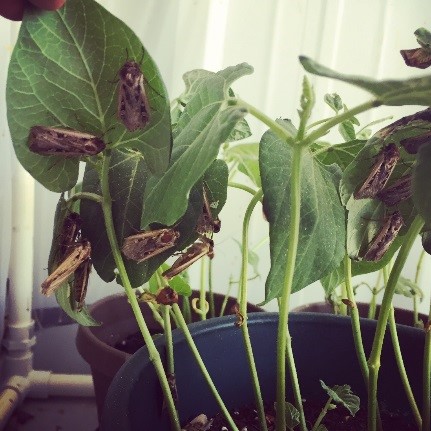
Striacosta albicosta (Smith), the western bean cutworm (WBC), can be a damaging pest in corn and dry bean crops. The larvae feed on the reproductive parts of the plant – tassels, pollen, silks, and developing ears in corn and flowers, leaves, and developing pods in dry beans – and can cause considerable losses in both the quantity (yield) and quality of the crop produced. Damage from larval feeding can lead to secondary fungal infections in corn ears and can open up pods to pathogens and other insects in dry beans.
Life Cycle
WBC has one generation per year. They overwinter as pre-pupae (a non-feeding, inactive stage) in the soil, pupate in early Summer, and emerge as adults beginning in late June to early July. In corn, females lay egg masses on the upper surface of corn leaves near the whorl; hatched larvae have a mixed feeding habit and feed on tassel tissue and pollen before moving down the plant to feed on silks and developing kernels within the ear. In late August to September, mature larvae drop from ears and burrow into the soil where they will overwinter, starting the cycle over.
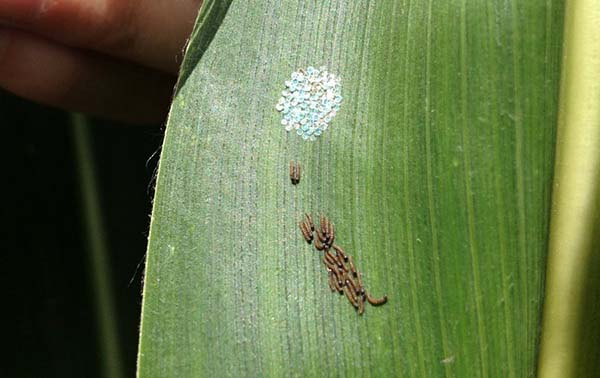
Egg Mass & Newly Hatched Larvae
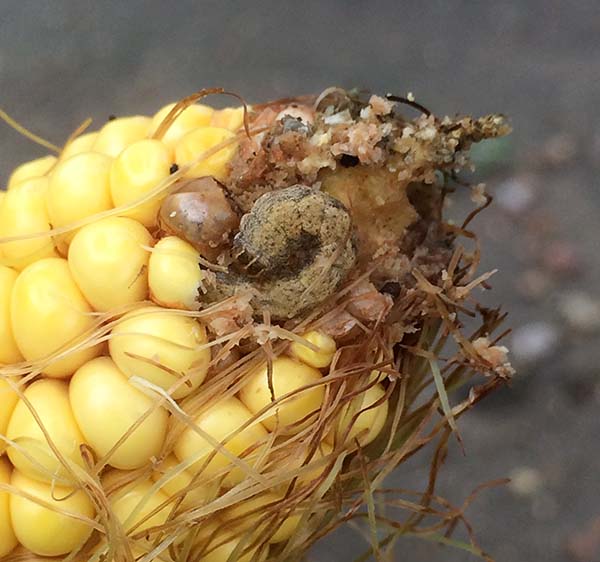
Mature Larva & Feeding Damage
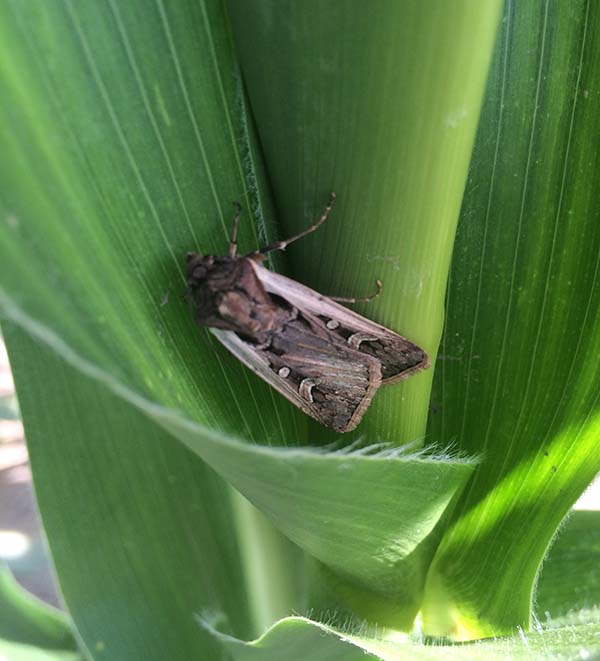
Adult Moth
In dry beans, egg masses are laid on the underside of bean leaves deep within the canopy, making them difficult to find. Hatched larvae feed on bean leaves near the egg mass and continue to feed on blossoms and on developing pods and beans as they mature. Older larvae feed at night or on cloudy days, and are also difficult to find within the crop canopy.
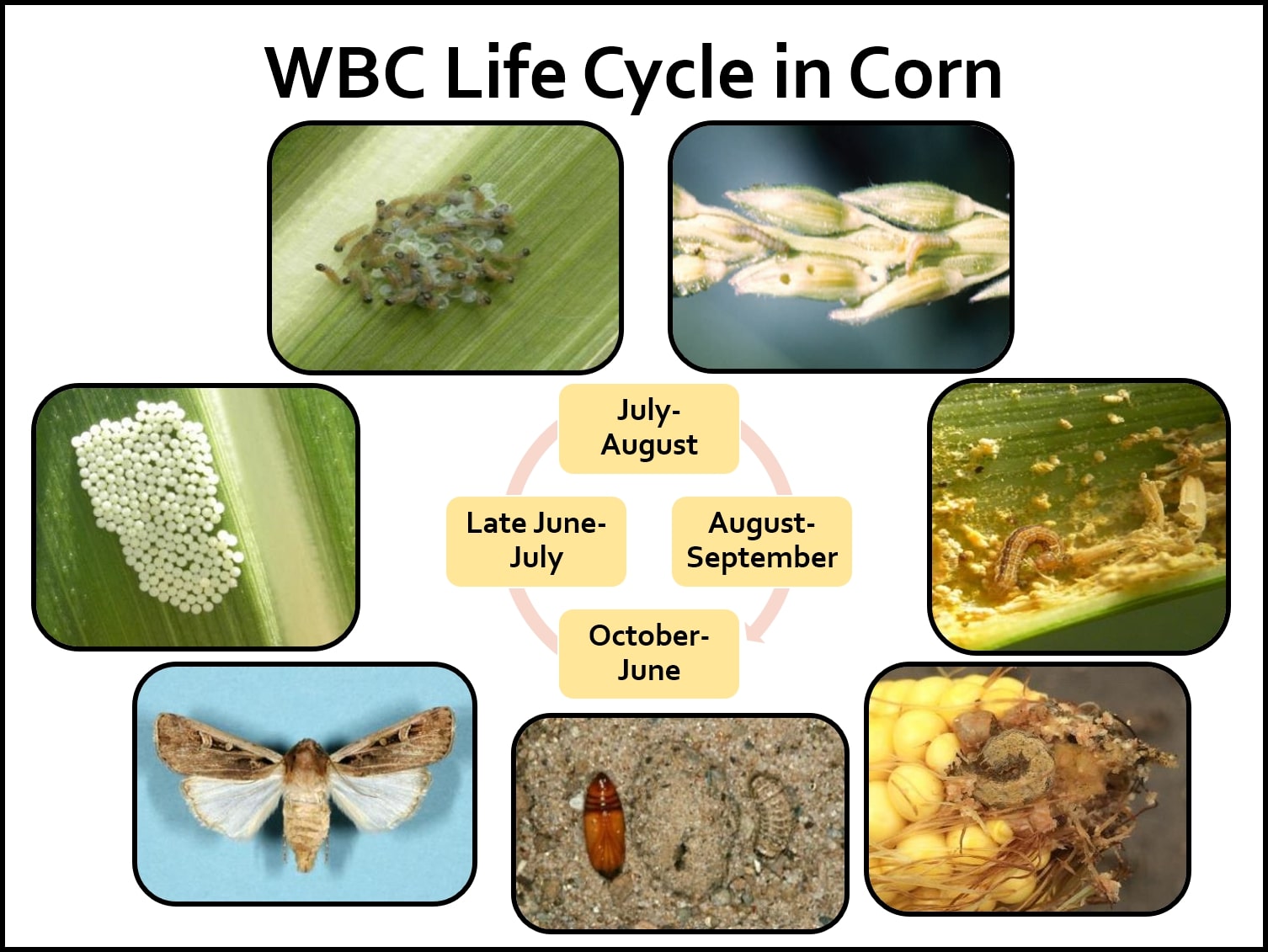
WBC Range Expansion
Historically, WBC populations were limited to the western Great Plains states, including Colorado, Nebraska, and Wyoming. Since 1999, the range of WBC has rapidly expanded to the east; populations can now be found throughout the US Corn Belt and as far east as Pennsylvania and New York in the US and Nova Scotia and Prince Edward Island in Canada. Several ecological and agronomic factors may help to explain this dramatic range expansion.
WBC Biology
- Capable of flying long distances
- Overwinters in sandy soils
Agronomic Changes
- Fewer foliar insecticice sprays in Bt corn
- Adoption of reduced or no-till systesms
- Planting earlier and/or shorter maturity hybrids
Timing Flight in Nebraska
WBC moths can be detected with black light traps or pheromone traps placed near crop fields. Extension entomologists at UNL maintain four black light traps throughout the state and regularly publish the data online during the summer months (Fig. 4). Similar trapping networks, such as the Great Lakes and Maritimes Pest Monitoring Network, exist in other parts of the country. These resources can be used by growers and crop consultants in these areas to help make decisions about when to start scouting for WBC egg masses and young larvae in corn and when to treat for WBC in dry beans. Because dry beans cannot be effectively scouted for eggs and young larvae, treatment decisions are typically made based on adult trap captures
Detailed Recommendations: WBC in Corn and Dry Beans, Ecology and Management of WBC in Corn and Dry Beans
Light Trap Data
Scouting
In corn, field scouting should be initiated when WBC moths are first caught in traps. The upper surface of the upper leaves of corn plants should be examined for the presence of WBC egg masses and young larvae. WBC egg masses contain around 50 eggs on average, but can have between 5 and 200 eggs. The tiny, dome-shaped eggs are 0.03 inches in diameter and pearly white in color when they are first laid. As they develop, eggs become tan in color and then turn dark purple shortly before hatching; the process of egg development usually takes between 4-7 days at typical summer temperatures. Within the historical range of WBC, treatment options should be considered when 5-8% of corn plants within a field have egg masses or young larvae.

White Egg Mass, newly laid

Tan/Purple Eggs, close to hatching
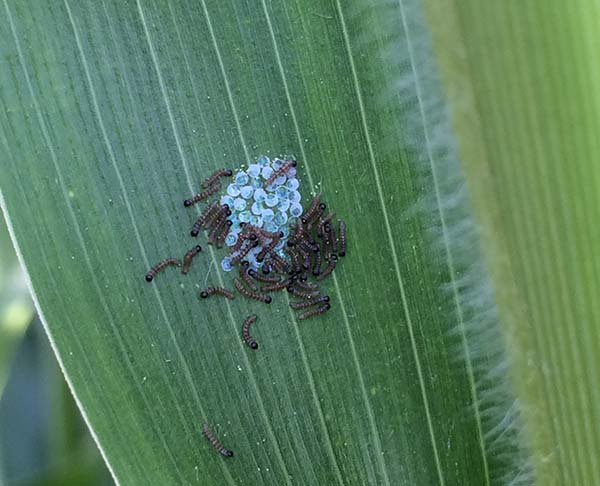
Newly Hatched Larvae